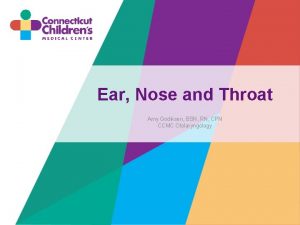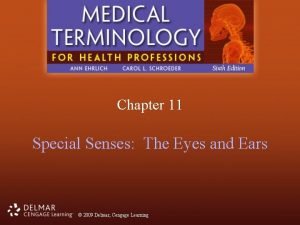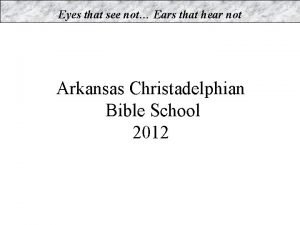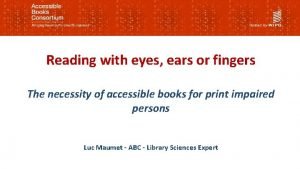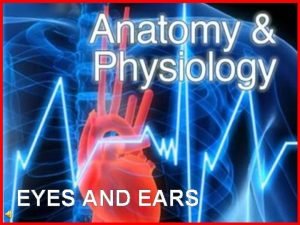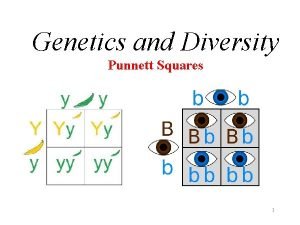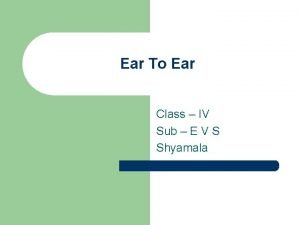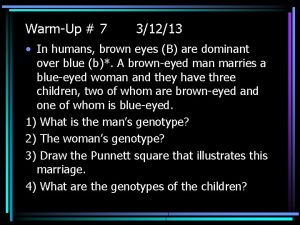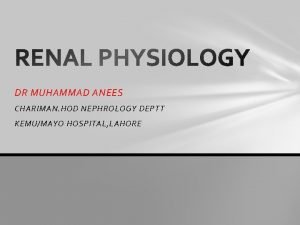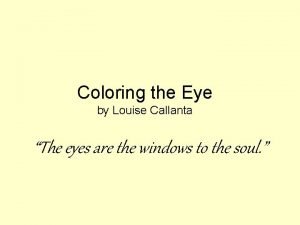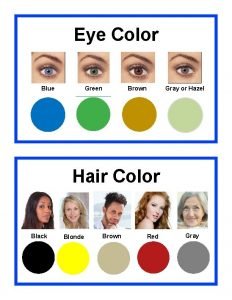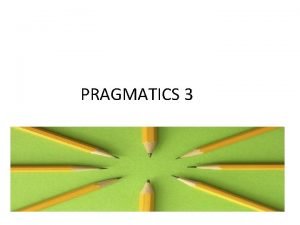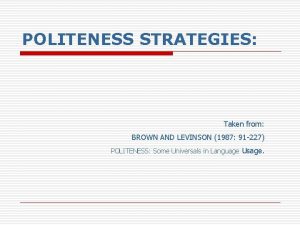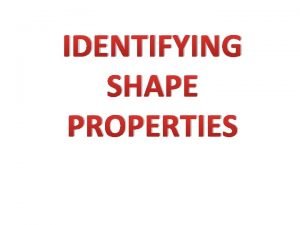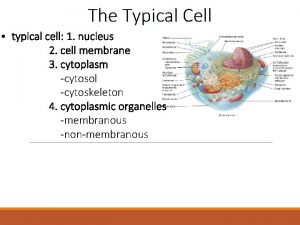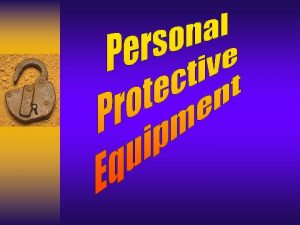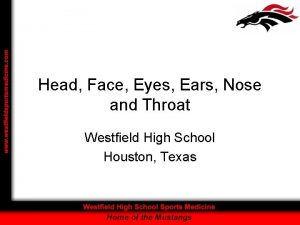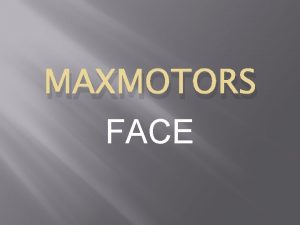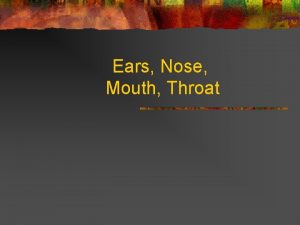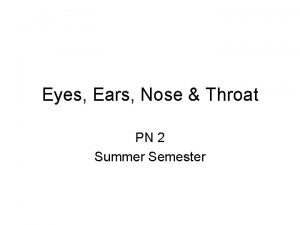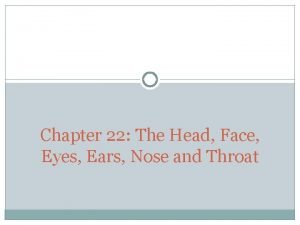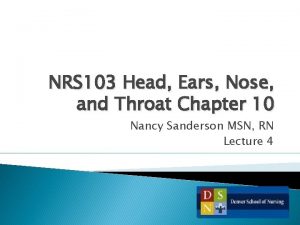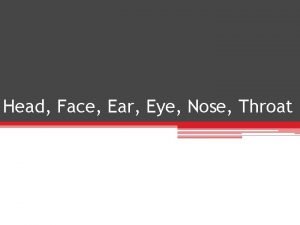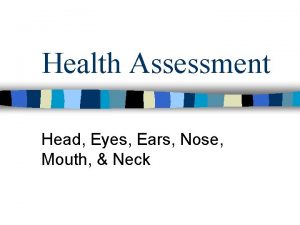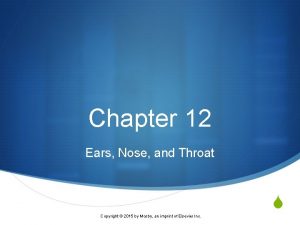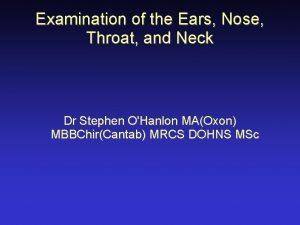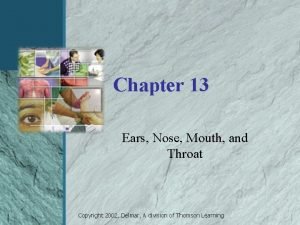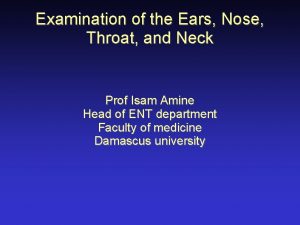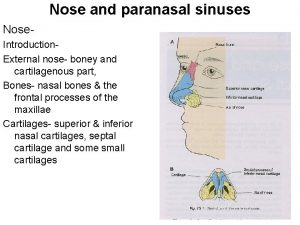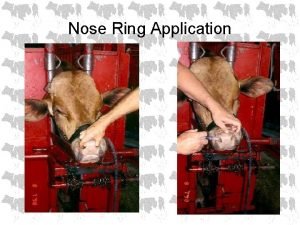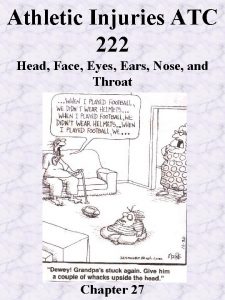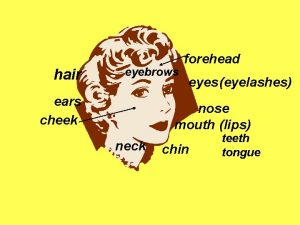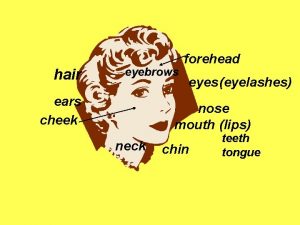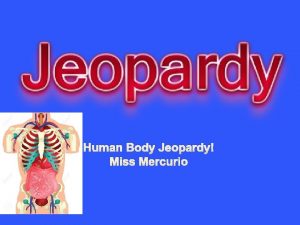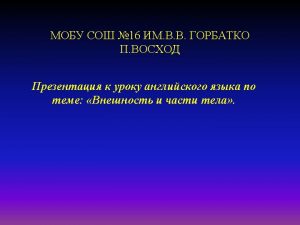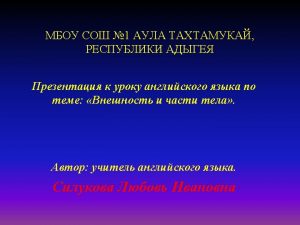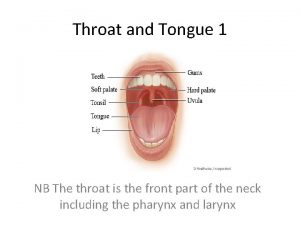The Head Face Eyes Ears Nose and Throat























- Slides: 23

The Head, Face, Eyes, Ears, Nose, and Throat Chapter 22 Pages 536 -565

Prevention of Injuries n Coaches have a responsibility to make sure that athletes are taught and are using correct and safe techniques. n Protective sports equipment.

Anatomy of the Head Bones: 22 bones joined by sutures. – Skull is made up of the frontal, ethmoid, sphenoid, 2 parietal, 2 temporal, and occipital bones. n Brain: – Cerebrum – Cerebellum – Pons – Medulla Oblongata n Meninges: 3 Meninges: membranes that protect the brain and spinal cord. – Dura Mater – Arachnoid – Pia Mater – Cerebrospinal Fluid n

Assessment Principles: History Injuries to the brain may or may not result in unconsciousness; disorientation or amnesia; motor, coordination, or balance deficits; and cognitive deficits. n When dealing with an unconscious athlete, what 2 things should you assume? ? ? n History n – – – Do you know where you are? Can you tell me what happened to you? Can you remember if you’ve ever been knocked out before? Does your head hurt? Do you have any pain in your neck? Can you move your hands and feet?

Assessment Principles: Observation n n Is the athlete disoriented and unable to tell where s/he is /time/ date/ opponent? Is there a blank/ vacant stare? Difficulty keeping eyes open? Is there slurred or incoherent speech? Are there delayed verbal/ motor responses? Is there gross disturbance of coordination? Is there inability to focus? Is athlete easily distracted? Does there appear to be memory deficiency? Does athlete have normal cognitive function? Is there a normal emotional response? How long was the athlete’s affect abnormal? Is there a clear, straw-colored fluid in the ear canal?

Assessment Principles: Palpation & Special Tests n Palpation: – Identify areas of point tenderness or deformity of the skull n Special Tests: Neurological Exam – – – Eye Function Balance Tests Coordination Tests Cognitive Tests Cranial Quick Check

Cranial Quick Check Number Name Sensory 1 Olfactory * Smell 2 Optic * Vision 3 Oculomotor * Vision 4 Trochlear * Vision 5 Trigeminal * Facial sensation/ Clench jaw 6 Abducens * Vision 7 Facial * * Taste/ Facial movements 8 Auditory * 9 Glossopharyngeal * 10 Vagus * 11 Accessory * Shrug shoulders 12 Hypoglossal * Stick out tongue * Motor Function Balance * Taste/ Swallow Valsalva manuever

Types of Head Injuries n n n n Skull Fracture Concussion Second Impact Syndrome Cerebral Contusion Epidural Hematoma Subdural Hematoma Migraine Headaches Scalp Injuries

Skull Fracture n Cause of injury: – May result from blunt trauma to the head and/or a fall from a height. n Signs of injury: – c/o severe HA, nausea, skull indentation, blood in the middle ear and/or ear canal, bleeding from the nose, discoloration around the eyes, discoloration behind the ears, CSF in the ear canal/nose. n Care: – Complications from the skull fracture can cause problems. Requires immediate hospitalization and referral to neurosurgeon.

Concussion (Mild Head Injury) n Cause of injury: – Abnormal jarring of the brain. – Direct blow and/or contrecoup injury. – An immediate/transient impairment of cerebral function. n Signs of injury: – HA, tinnitis, nausea, irritability, confusion, disorientation, dizziness, LOC, amnesia, difficulty concentrating, blurred vision, photophobia, and sleep disturbance. – Glasglow coma scale. n Care: – Colorado Guidelines

Concussion Guidelines GRADE 1 ST EPISODE 2 ND EPISODE GRADE 1 May return if no symptoms. May return in 2 Terminate weeks if no season. symptoms for 1 week. GRADE 2 May return to play if Out for a no symptoms for 1 minimum of 1 week. month. Terminate season. GRADE 3 Out for a minimum of 1 month. Must have no symptoms for 2 weeks. Terminate season. 3 RD EPISODE

Post-Concussion Syndrome n Cause of injury: – May occur with MHI that do not involve LOC and/or in cases of a severe concussion. n Signs of injury: – c/o severe HA, impaired memory, lack of concentration, anxiety, and irritability, giddiness, fatigue, depression, and visual disturbances. – Symptoms may begin immediately or within 2 weeks following injury. n Care: – Refer to MD. – Do not allow athlete to return to play until cleared by MD and all symptoms have resolved.

Second Impact Syndrome n Cause of injury: – Occurs as a result of rapid swelling of the brain following a 2 nd HI that occurs before the symptoms of the previous injury have resolved. n Signs of injury: – Onset is between 15 seconds and several minutes. – LOC to coma, dilated pupils, loss of eye movement, and respiratory failure. – LIFE-THREATENING!!! n Care: – BEST METHOD OF CARE IS NOT TO LET ATHLETES PARTICPATE IN SPORT UNTIL THEY ARE FULLY HEALED.

Cerebral Contusion n Cause of injury: – Small hemorrhages or intracranial bleeding within the cortex, the brainstem, or the cerebellum. – Usually occur when the head hits a hard/immovable object. n Signs of injury: – LOC, persistent HA, dizziness, and nausea. n Care: – Hospitalization. – Athlete may return to sport participation only when asymptomatic, cleared by an MD, and has a normal CT scan.

Epidural Hematoma n Cause of injury: – A blow to the head can cause a tear of the meningeal arteries. n Signs of injury: – LOC, severe head pains, dizziness, nausea, dilation of one pupil, and/or sleepiness. – Later stages include deteriorating consciousness, neck rigidity, depression of pulse/respiration, and convulsions. n Care: – Refer to ER. – CT scan.

Subdural Hematoma n Cause of injury: – Result from acceleration/deceleration forces that tear vessels that bridge the dura mater and the brain. n Signs of injury: – Unconscious, dilation of one pupil, HA, dizziness, nausea, and/or sleepiness. n Care: – Refer to ER. – MRI and/or CT scan.

Migraine Headache n Cause of injury: – A migraine is a disorder characterized by recurrent attacks of a severe HA with or without GI problems. – An athlete with a history of repeated minor blows to the head may develop this condition. – Vascular condition. n Signs of injury: – Flashes of light, blindness in the half field of vision, and paresthesia. n Care: – Prevention, and medications.

Scalp Injuries n Cause of injury: – A blunt or penetrating trauma. n Signs of injury: – c/o being hit on the head and extensive bleeding is present. n Care: – Wounds more than ½ inch long and 1/8 inch deep should be referred to MD. – In less severe cases, the bleeding should be controlled, the wound cleansed and covered.

Facial Anatomy & Injuries n Anatomy: – Maxilla – Mandible n Facial Injuries: – Zygomatic fracture – Facial laceration

Dental Anatomy, Prevention, & Dental Injuries n Anatomy: – – – n Crown Root Cementum Dentin Pulp Prevention: – Mouthguards – Good oral hygiene n Dental Injuries: – Tooth fractures – Tooth subluxation, and avulsion

Nasal Injuries n Nasal Injuries: – – Nasal fracture Chondral separation Deviated septum Nosebleed

Ear Anatomy & Injuries n Anatomy: – External ear – Middle ear – Inner ear n Ear Injuries: – Auricular hematoma – Rupture of the tympanic membrane – Swimmer’s ear – Middle ear infection – Impacted cerumen

Eye Injuries n Eye injuries: – Orbital hematoma – Orbital fractures – Foreign body in the eye – Corneal abrasions – Hyphema – Retinal detachment – Acute conjunctivitis
 Ccmc ear nose and throat
Ccmc ear nose and throat Slanted ears
Slanted ears Nose
Nose Low nose bridge
Low nose bridge Learning exercises chapter 11 medical terminology
Learning exercises chapter 11 medical terminology He who has ears to hear let him hear
He who has ears to hear let him hear Ears that hear and eyes that see
Ears that hear and eyes that see Impaired eyes and ears
Impaired eyes and ears Special senses the eyes and ears
Special senses the eyes and ears Eyes are to spectacles as ears are to
Eyes are to spectacles as ears are to Hear us from heaven jared anderson
Hear us from heaven jared anderson Pencil poem for child
Pencil poem for child Punnet square
Punnet square The has ears like fans
The has ears like fans Brown eyes are dominant to blue eyes
Brown eyes are dominant to blue eyes Pf
Pf Two blue eyed parents brown eyed child
Two blue eyed parents brown eyed child Green vs hazel eye color
Green vs hazel eye color Positive face and negative face examples
Positive face and negative face examples Bald on record examples
Bald on record examples Pros and cons of face to face interviews
Pros and cons of face to face interviews I have a flat face
I have a flat face Phospholipid bilayer
Phospholipid bilayer 29 cfr 1910 regarding face head foot and hand protection
29 cfr 1910 regarding face head foot and hand protection
